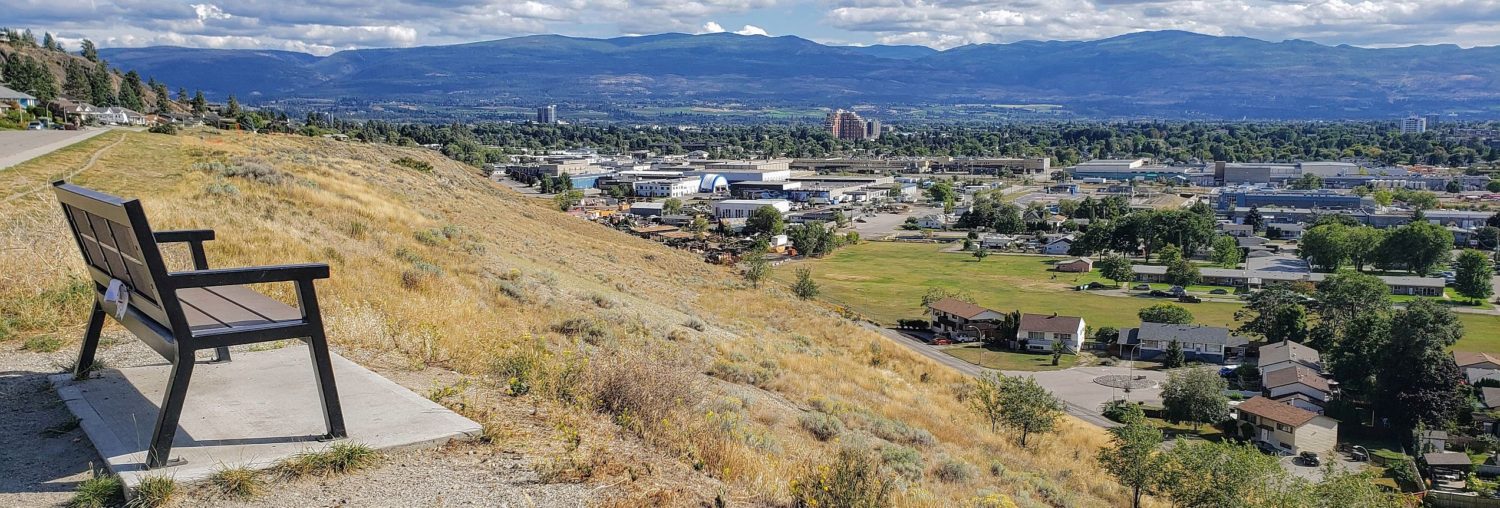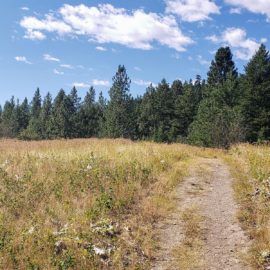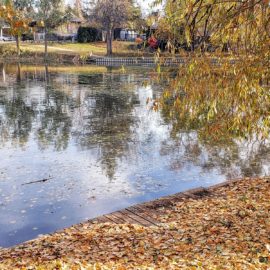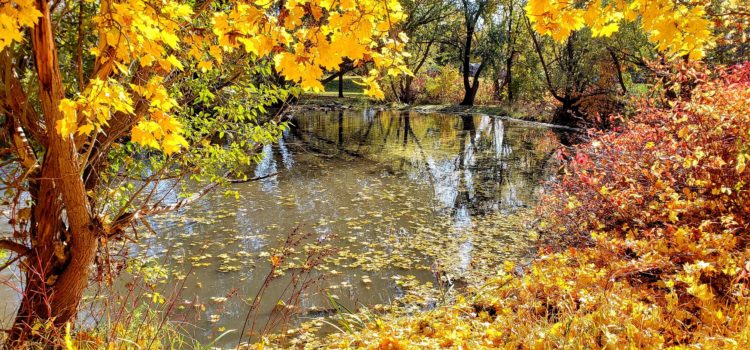
Kelowna Parks Challenge – Trip #12
This week my family and I went on an adventure in Glenmore, in Kelowna, BC, as part of the Kelowna Parks Challenge. We travelled along the Brandt’s Creek Linear Park, and saw seven parks! This urban trail provided one of the best walks we’ve had in Kelowna so far.
Read on for my impressions and reflections.
The Trip
For this adventure, we once again travelled along a creek. Brandt’s Creek drains the Glenmore Valley, which lies to the north of downtown Kelowna. The creek has two branches, and the western branch has been engineered for stormwater management. This involved creating an urban trail along most of its length, with a series of parks strung along the path. Each park comprises a lowered area with a small wetland, where flooding stormwater can gather and rise safely before moving on to the next park.
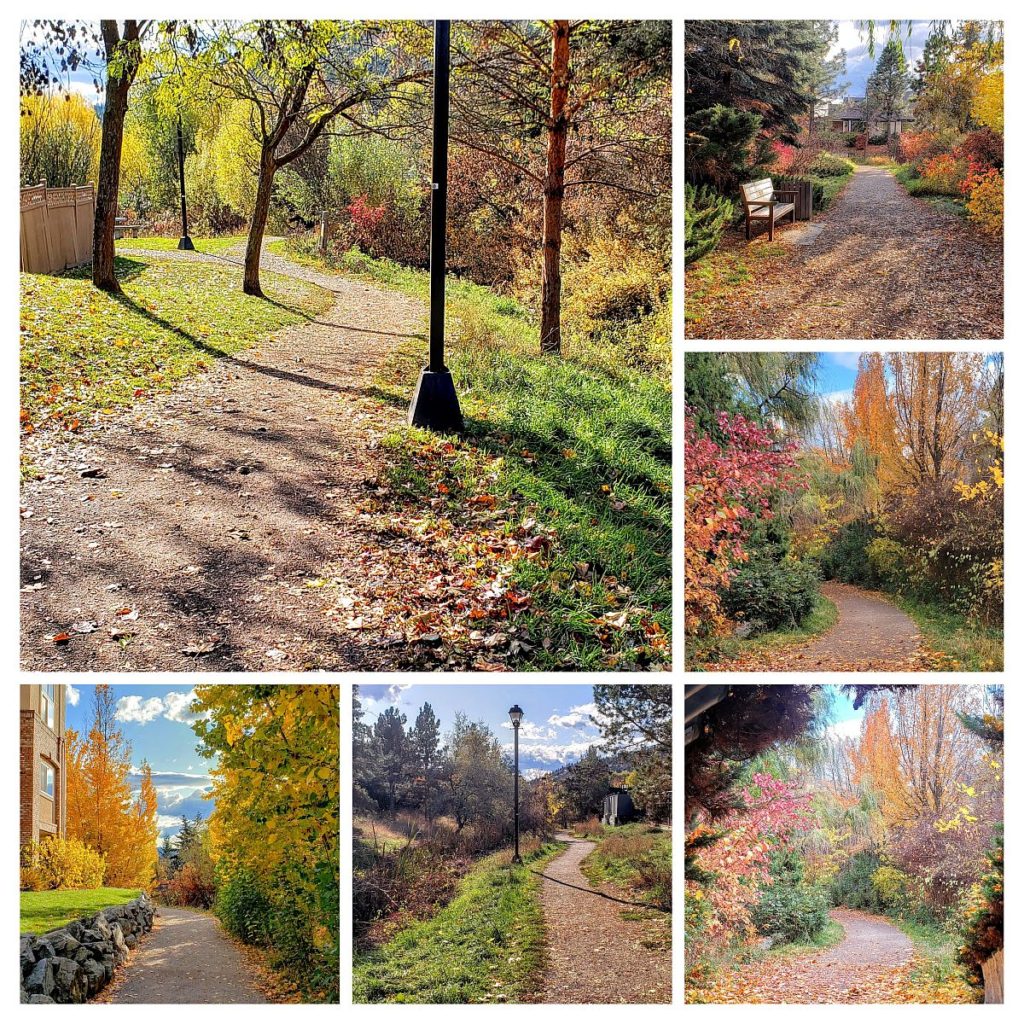
Altogether this makes for an extremely delightful walking experience. We saw ducks and muskrats in the ponds and many people out enjoying the lawns and playgrounds. The fall colours were amazing, and it was a joy to walk so far and not be alongside any busy streets.
Millard Glen Park
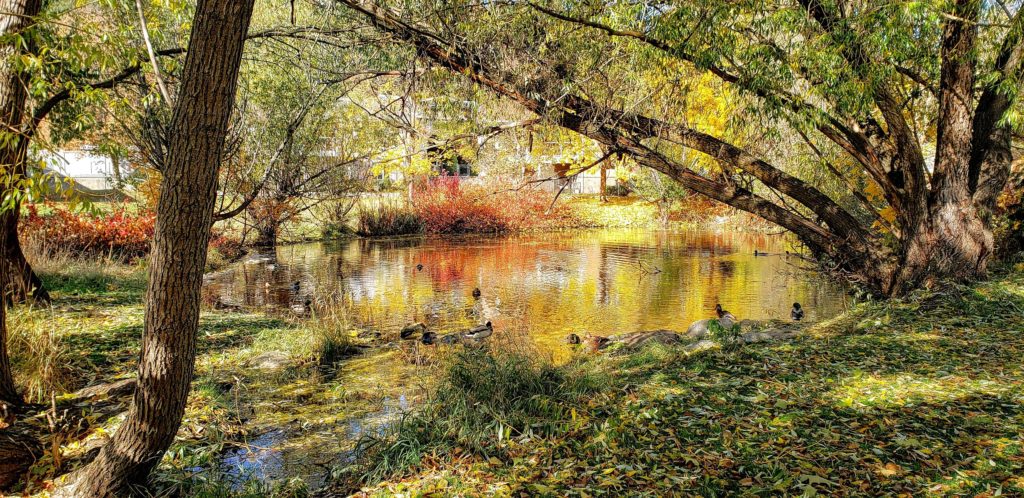
We started our trip from the north end of the trail, near the north end of the Glenmore Valley. The creek begins its journey in the daylight at the north end of this park and quickly forms a lovely pond. We saw many ducks enjoying the shady, protected space.
The pond is the only real feature in this park. From here the trail heads south between residential houses and alongside the creek.
Newport Glen Park
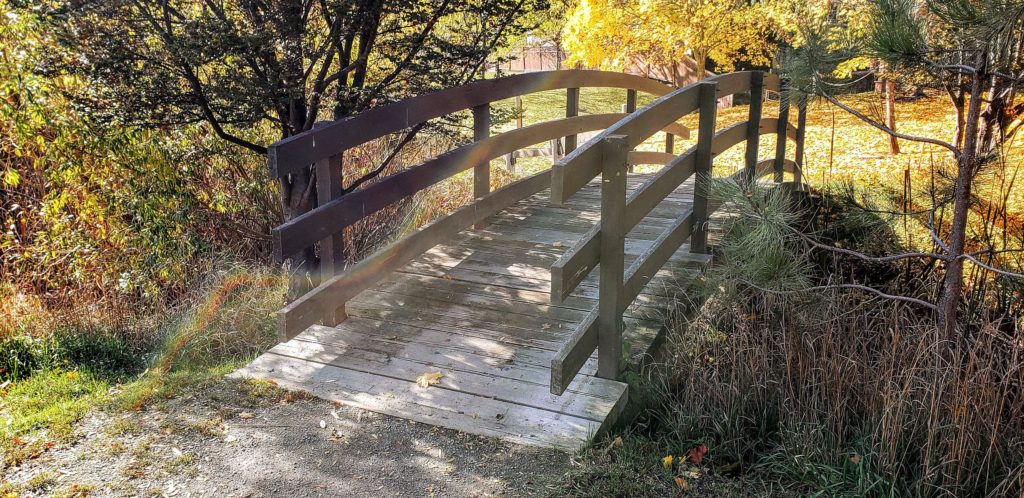
In the next park, the creek crosses under a couple of charming bridges before continuing its journey south. There isn’t much of a pronounced pond here, but the creek’s banks are nearly flat and there is a lot of room for floodwaters to expand into.
In addition to the creek and its riparian habitats, this park also features a children’s playground.
Cross Glen Park
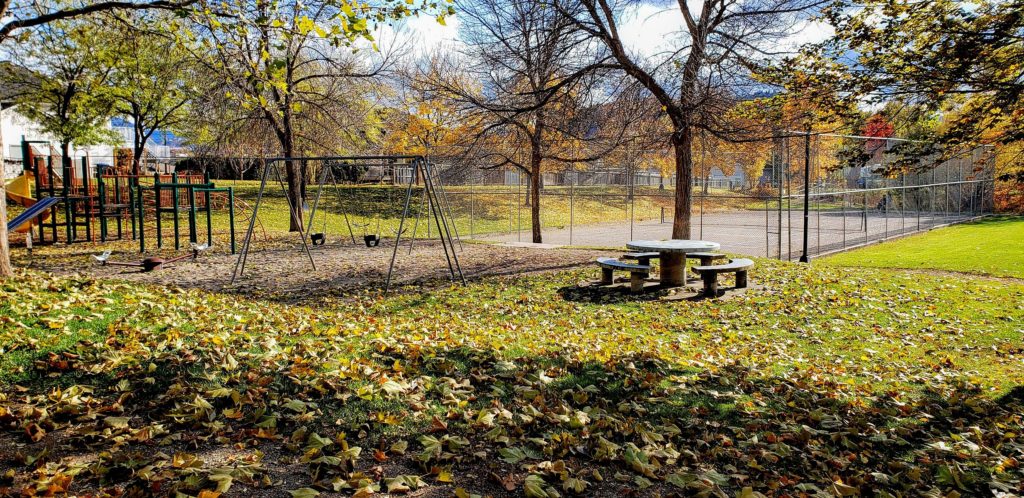
After travelling south from the previous park, Brandt’s Creek enters Cross Glen Park. Here, the creek jogs west to accommodate a tributary entering in the form of storm sewer outflow. We saw both bullrushes and cattails here, as well as a large and beautiful dragonfly.
Besides the creek, this park features both a playground and a tennis court. On the day of our visit, the court was being used for street hockey.
Matera Glen Park
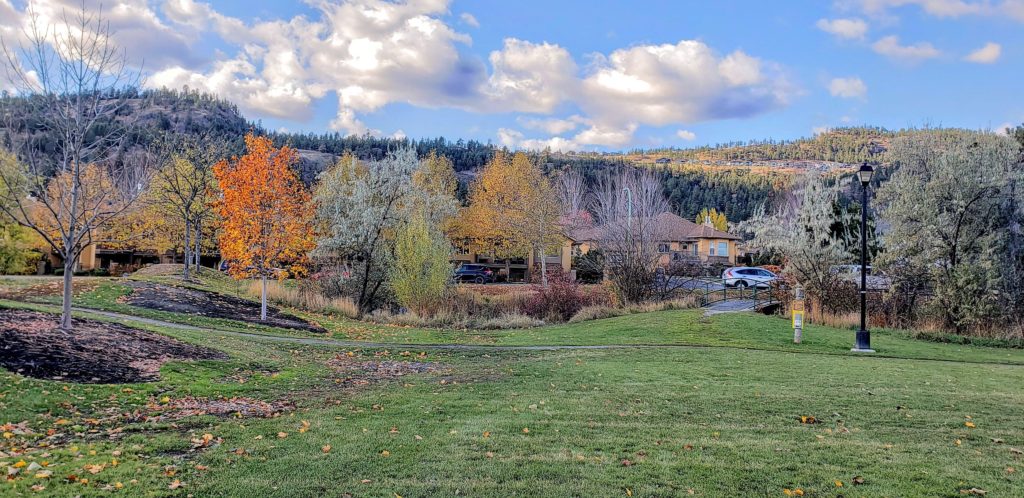
After leaving Cross Glen Park, Brandt’s Creek flows east and crosses under Glenmore Road. The trail crosses alongside it and continues to its first park on the east side of the valley.
This park, and the next two, all feature the same configuration: the creek runs from north to south along the west side of the park, leaving the rest a large, lowered lawn, sometimes adorned with other features.
Matera Glen Park is rather large and shaped like a quarter circle. In addition to an expanse of occasionally damp lawn, it features a playground and a large patch of asphalt. At one end of the asphalt is a basketball hoop and at the other is a squarish mound with ramps on four sides, which I have learned is a skateboarding feature.
Whitman Glen Park
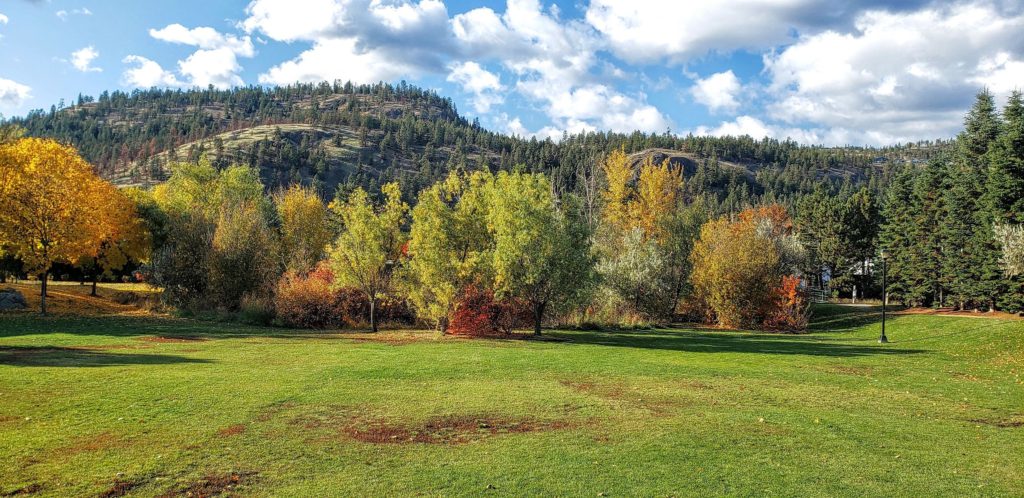
This is the only park in the east side series that has no major additional features besides the creek. It is essentially a large square lawn, but the value of that should not be underestimated. Despite the fact that it is designed to be damp some of the time, it undoubtedly provides a wonderful place for children and others to run and play. Of course, it also provides its immediate neighbours with access to the creek.
Sutton Glen Park
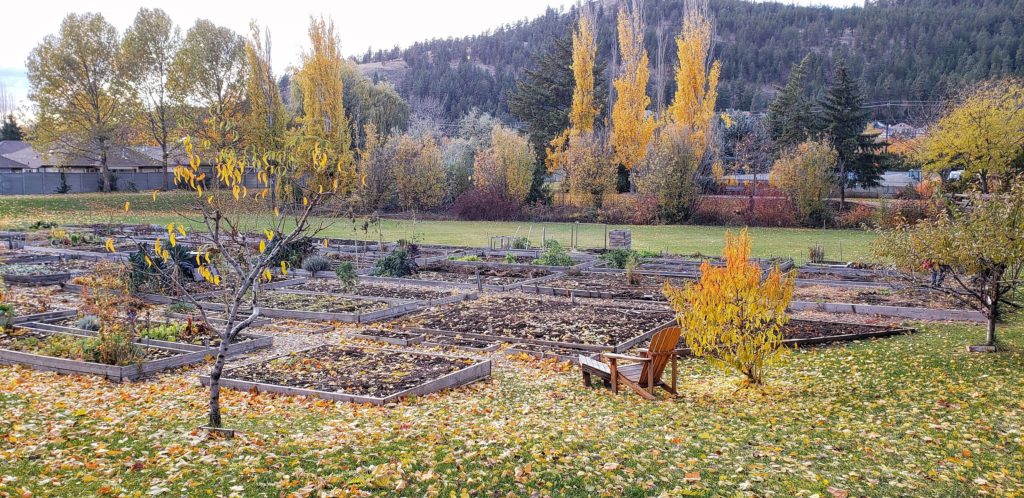
This park has a brilliant feature, not shared by the others in this series: a community garden! Given that the park’s area is designed to flood or at least get damp every year, its usefulness as a play space is limited, unless you don’t mind getting your shoes muddy. A community garden, however, turns this potential drawback into a wonderful advantage. By placing the beds down on the floodable field, the installers of this garden have given their flowers and vegetables a better chance to dwell in moist soil. This is significant in an area that used to be called Dry Valley because it gets a little less precipitation than the rest of Kelowna.
Valley Glen Wetland
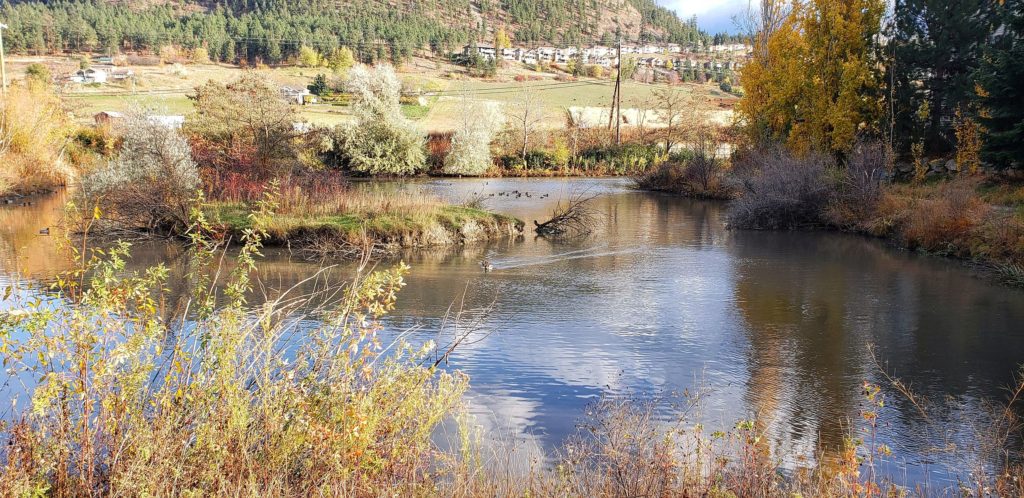
The seventh and last park along the Brandt’s Creek trail is located at the place where the two branches of the creek meet before heading south. At this spot, there is a substantial pond and we saw many ducks enjoying themselves. There is an island they can have to themselves and much riparian habitat around the edges for them to explore and exploit.
A path travels around the outside of the whole pond, which makes for a nice stroll. Brandt’s Creek and its linear park continue to the south, but there are no more parks along the rest of its length.
Reflections
Storm Management Parks
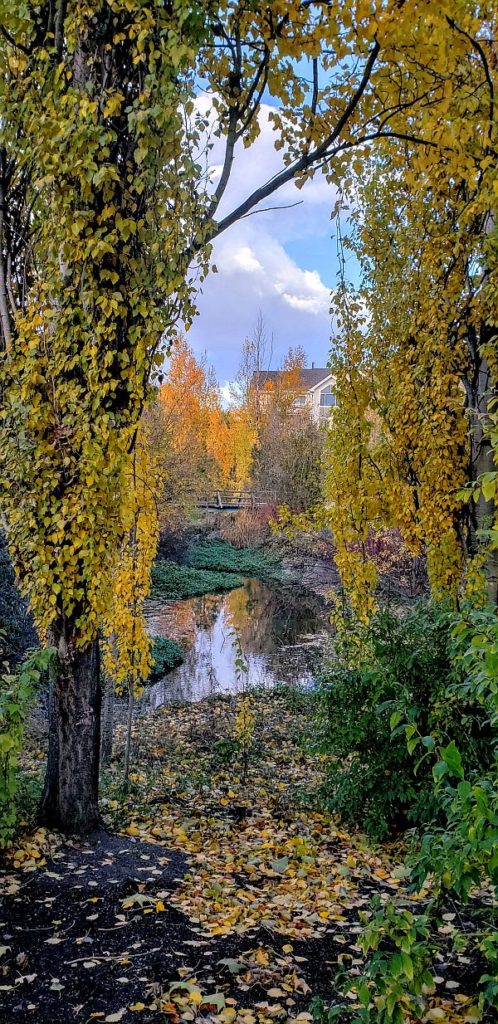
The parks along the Brandt’s Creek Linear Park are one of the best examples I’ve seen of wetlands restored or constructed to handle excess water. These projects are a win for people and for wildlife. The people get a lovely natural amenity to enjoy and the wildlife get a bit of their natural homeland back.
They also provide one of the clearest examples of green infrastructure. Nature provides human society with many services that allow us to continue living, but we don’t always appreciate their monetary value. With an engineered system like this, the natural benefits, such as floodwater control and nature-bathing opportunities are clear, but so are the financial costs to the city.
Native Plants
I still have to find out when this trail was built, but I was interested to see that most of the trees planted along the creek were typical park trees and not native specimens. To me, this suggests the designers saw the trail more as a park than a habitat restoration project. I saw plenty of scotch pines and plane trees, for example. Nevertheless, the areas along the trails are being allowed to naturalize to a degree, which was a welcome sight.
There are a lot of different ideas about planting native plants. Certainly, they can provide authentic local character, which is why the Nazis planted them along the autobahn, for example, but it is not exactly accurate to say they are the plants best adapted to the local climate. If that were the case, they would never be outcompeted by invasive species.
It is more accurate to say that native plants are best because, having evolved as part of local native ecosystems, they naturally complement the other components of those ecosystems, often in a carefully balanced symbiotic relationship. So, when trying to reconstruct a local wetland, they are naturally the best choice to maximize your chance of success. In that light, the trees I saw seem like a missed opportunity.
Changing Seasons
I chose this adventure for this time of year because I expected fall colour. I was not disappointed! Due to extra precipitation late in the summer, the leaves have stayed on the trees longer this year and the colour has been amazing! If you are looking for a place to see autumn leaves, lowlands, such as those near lakes and streams, are a good bet. In BC, the higher areas have more conifers.
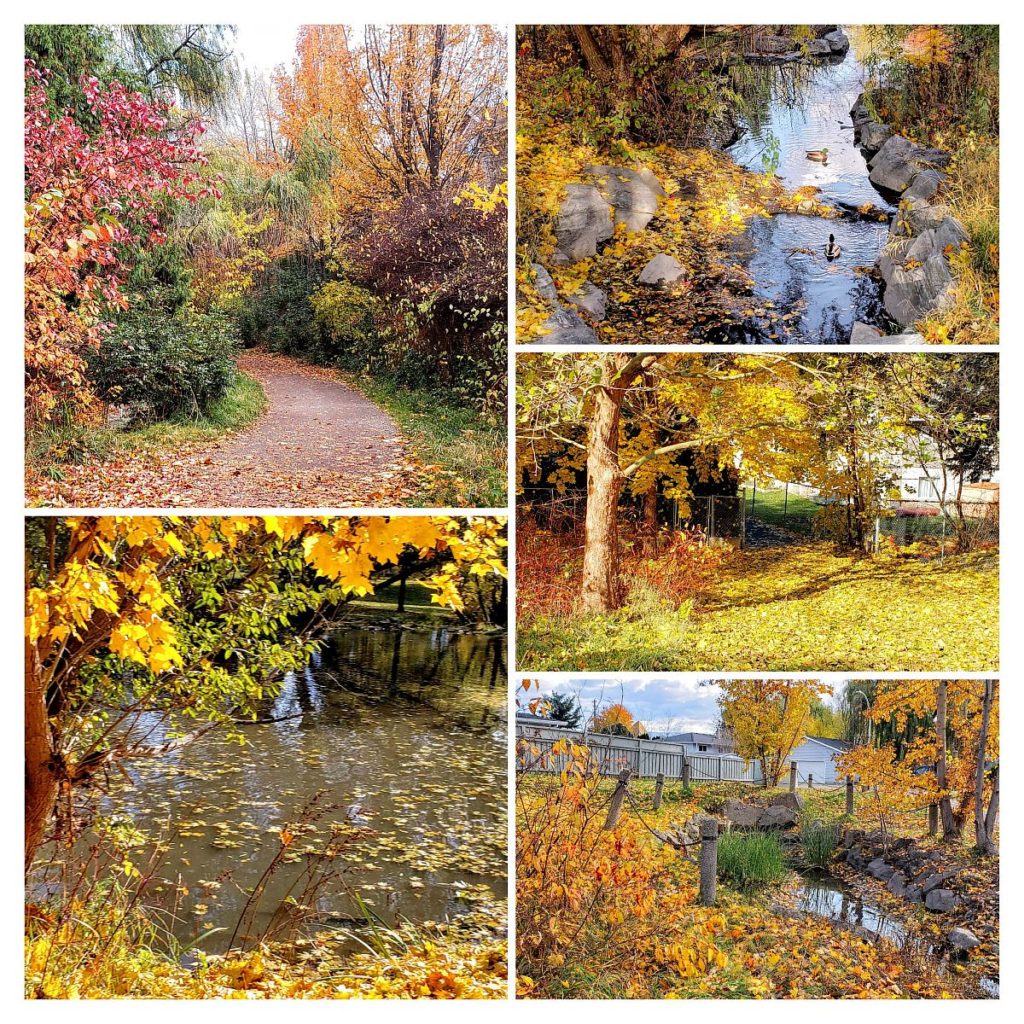
The season also was evident on this trip in the form of the weather. Despite it being a generally sunny day, there were a few dark clouds in the sky. Occasionally, the sun would be obscured. By the time we got to Valley Glen Wetland, however, a large cloud from the west had covered the sky and we were pelted by sleet! No worries, though; variety is the spice of life, and I was delighted to be out experiencing the variability. How often have you been caught in a sleet-storm? It doesn’t happen every day!
Conclusions
First of all, if it wasn’t obvious, I was more than delighted by this urban trail and hope for great things from similar upcoming developments. The city has begun work this year on the Bellevue Creek Linear Trail down in the Mission, and I can hardly wait to see how that compares.
In terms of my challenge, the addition of seven parks this week means I have now seen sixty out of 203 parks on the Official List in ninety-seven days. In other words, I have seen 30% of the parks in 27% of the year. It is nice to pull ahead of the pace a little bit. Now, where will I go next week?
